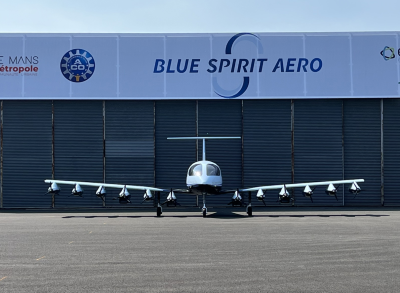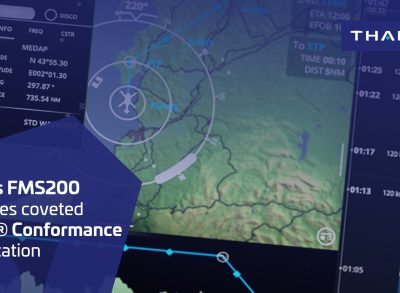Big Data for aviation: a new revolution is coming
We are familiar with disruptive technologies that have an impact on our everyday lives (such as Uber transportation, commercial drones delivering groceries to our door steps, remote security systems for our homes, etc.) but in the industrial economy many businesses are still figuring out how to apply Artificial Intelligence, big data, cloud storage, connectivity, mobility and social media to look beyond their own needs to support their customers. Ken Coleman, VP general manager of the Avionics Worldwide Services for Americas, explains the impact of digital transformation on airline ecosystems.

Aircraft connectivity is a critical first step but it is what we do with this that will really be transformative for both the front- and back-ends of the airline; e.g. adding to critical safety services, improving operational performance, providing a seamless ground/air experience for passengers, increasing revenues for airlines, etc. Going forward, data and Data Analytics are predicted to be one of the strongest transformation factors for airlines because of several reasons. Data can improve ground operations, supporting faster turnaround times and better airspace management solutions which are driving efficiencies. They can also give airlines a critical look at passengers to enable better and more personalized experiences for each passenger, which in turn drives brand loyalty, increases customer satisfaction, enables stronger auxiliary revenue stream and finally supports scheduling/rebooking of passengers when delays occur.
Can you give us some concrete examples of what is now possible with Data Analytics?
With a Big Data architecture, an airline can enrich historical data with real-time information (through connectivity) to help predict, while in flight, part failures. Warnings can be generated to an operations manager notifying them of a 99.5% chance of part x failing within the next two flights. With this real-time alert, an airline can proactively have parts ready upon an aircraft’s arrival, fix the part, and thereby reduce downtime, customer delays, and overall maintenance checks.
For Real-Time Flight and Fleet Optimization, an airline has significant amounts of ADS-B data, weather information and other historical data. Additionally, an airline has specific passenger information for each flight (number of executive platinums, revenue per flight, profit per flight, etc.). Utilizing big data during normal operations, airlines can combine historical data with real-time weather information, sensor data, and other pertinent data to optimize the flight path (altitude, speed, etc.) thereby minimizing fuel cost. During disruptions, an airline can not only optimize flight paths, but they can choose to divert plans based on a “value score” assigned to each particular plane. For instance, if only three landing slots are available at a given airport, the airline can take into account the “value score” of flights to choose which flights to divert vs. land.
And what can Bid Data bring to passengers?
Utilizing historical information on customers’ purchase history, IFE browsing history, social media feeds, partner info (what hotel chain they prefer), etc. – an airline has the ability to know the “customer DNA”. In real-time, an airline knows where a plane is headed, where a passenger is sitting, and what a passenger is viewing on the IFE or connectivity system (watching a movie, browsing for hotels, looking for skis, etc.). Through a combination of the historically generated “customer DNA”, plus the current real-time information being gathered, specific and personalized advertising or programming can be offered from airline partners, thereby increasing ancillary revenues and improving customer satisfaction.
And finally, with historical “customer DNA” and data regarding individual passengers’ day-of-travel plans, an airline can create customized delay accommodations and once again improve customer satisfaction (e.g. if we know a passenger had a 7pm call that will be missed, and they like Marriott hotels, the airline loyalty app can send a pop-up SMS in real time offering a room at a nearby Marriott hotel where the passenger can complete their call). Today, digital Data enabled through connectivity is transforming the aviation industry including airlines and all other stakeholders in the aviation ecosystem.
What are the main stakes today for Big Data in the aviation field?
Cybersecurity is a must as aircraft become nodes in the IoT environment. Aircraft are increasingly becoming internet-enabled machines – which can be prone to hacking and attacks. As regulators look closer at cybersecurity we must do everything we can to protect passenger information, payment details and IP of both on-board and streaming content. That is why we take a holistic view of security working with stakeholders to exceed applicable security requirements for connected systems. In this domain Thales is uniquely positioned to offer a cybersecure aviation and aircraft environment – especially due to our recent acquisition of Vormetric which demonstrates our commitment to meet the cybersecurity challenges of our customers.
Find us on Twitter @thales_avionics, on our official Youtube channel Onboard TV and on LinkedIn Thales Aerospace.




